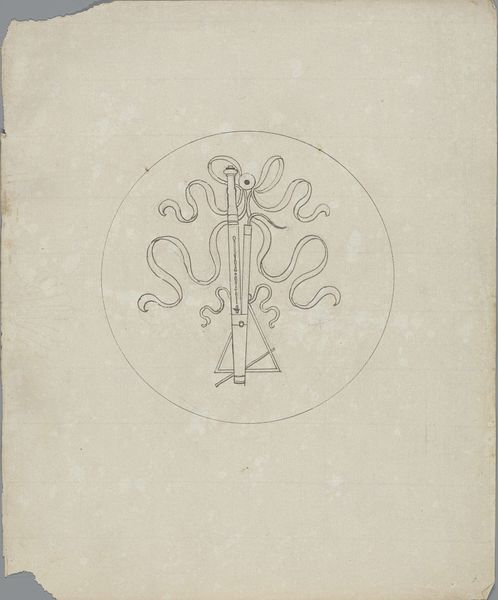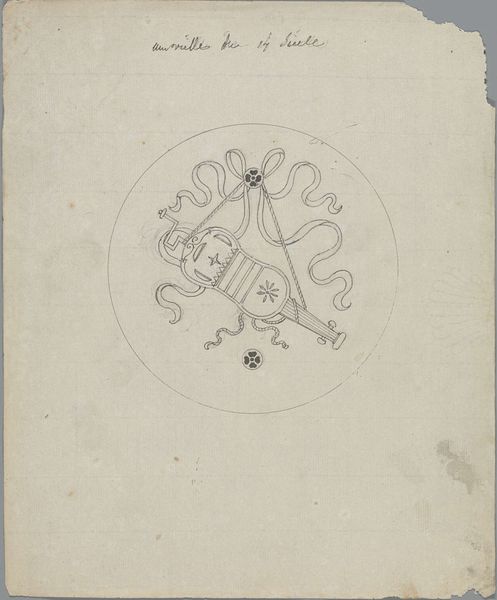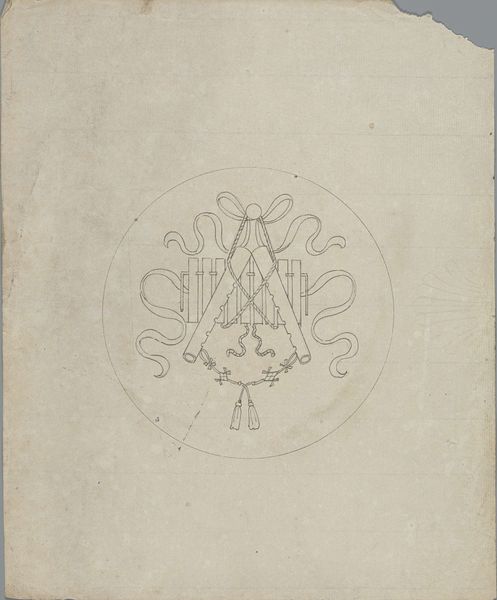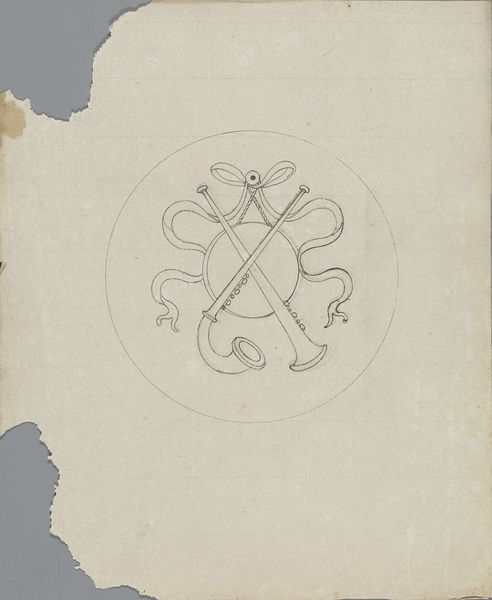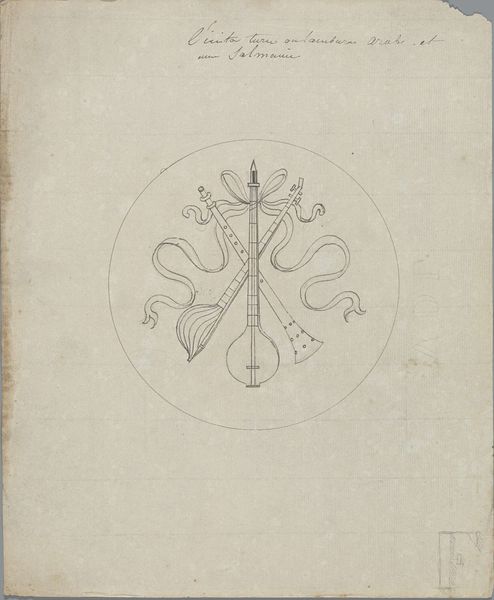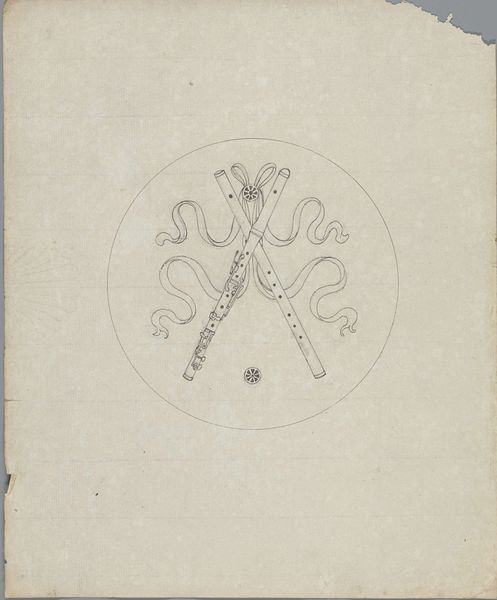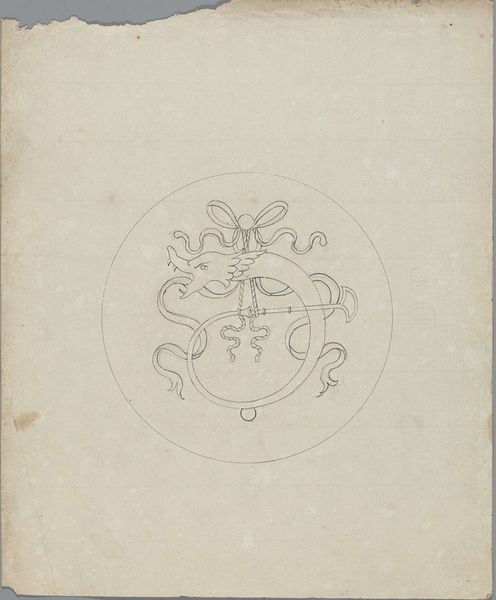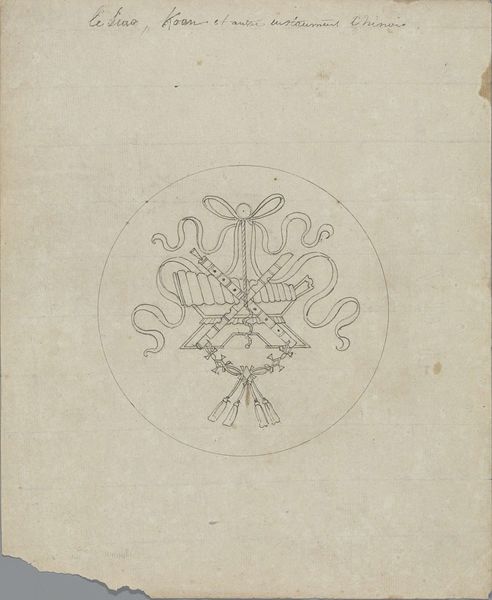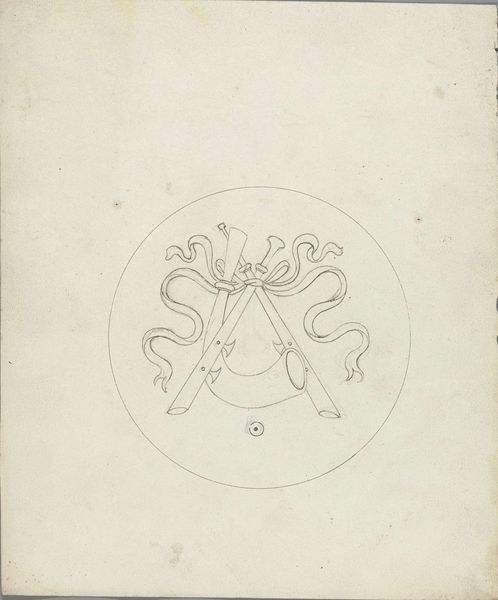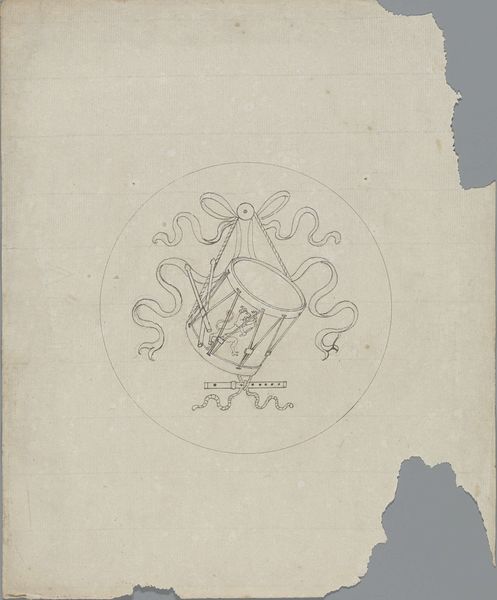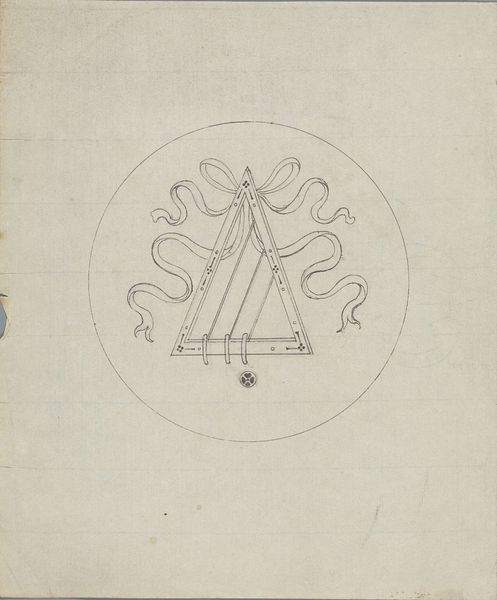
drawing, pencil
#
portrait
#
drawing
#
figuration
#
pencil
#
line
#
academic-art
Dimensions: height 253 mm, width 208 mm, diameter 123 mm
Copyright: Rijks Museum: Open Domain
Curator: Let’s discuss “Violon et autres instruments negres”, a pencil drawing by Pierre Félix van Doren, dating to before 1828. Editor: It strikes me as rather austere for such a potentially vibrant subject. The precision of the line work creates a sense of detached observation. Curator: Note how the circular frame, echoing classical medallions, encloses a meticulously rendered collection of instruments. The formal structure is quite deliberate. Consider the placement of each item – the violin vertically bisecting the space, anchored by ribbons and balanced with what appears to be a tambourine and crossed sticks. Editor: Yes, and what’s particularly compelling is the choice of “negres” in the title. We can unpack layers of historical meaning connected to minstrelsy and performance tied to these instruments in the 19th century. There’s a palpable tension. The ribbons almost mock the gravity suggested by other elements. Curator: Indeed. There’s a calculated restraint in the line quality itself. Observe how the shading is minimal, directing our attention instead to shape and outline. It almost denies any emotional excess typically associated with musical performances. The structure resists any overflow, and the symbolism could be multiple and conflicted. Editor: Exactly, especially considering Van Doren was working in this era of burgeoning colonial expansion and anthropological inquiry. It forces us to question whose vision and intention we're really viewing. This piece challenges assumptions about visual narratives related to Black people in the diaspora by being so...stark. Curator: A challenge precisely built into its structure, into this calculated formality, no less potent for its graphic simplicity. Van Doren gives us not a celebration but a formal investigation of instruments inextricably linked to cultural stereotypes and memories, without judging them explicitly. Editor: Leaving viewers much to consider concerning not just representation but its inherent politics and echoes within our cultural archive. Curator: It is in that very unresolved state, I feel, that its modern significance is to be found.
Comments
No comments
Be the first to comment and join the conversation on the ultimate creative platform.
